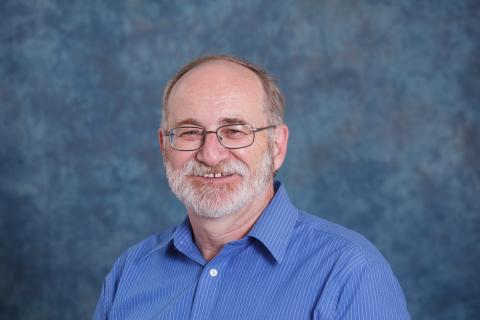Our research uses state-of-the-art laser techniques to identify and study reactive intermediates of importance in solar energy conversion, semiconductor fabrication, upper atmospheric reactions, combustion and interstellar chemistry. Unlike more conventional species, reactive intermediates are short-lived, usually highly energetic, and difficult to detect. However, since they usually play crucial roles in determining the course of the chemical reactions in which they are involved, information about these reactive intermediates is very valuable. Spectroscopic techniques involving high power lasers are ideal for detecting, quantifying and characterizing these species.
The laser experiments typically involve shining an intense laser beam into the sample of interest and detecting the absorption spectrum indirectly, by observing fluorescence or phosphorescence of the species interacting with the laser light. By changing the color or wavelength of the laser, we can determine which wavelengths give fluorescence. Since a molecule cannot fluoresce without first absorbing the laser light, a plot of fluorescence intensity versus laser wavelength gives a spectrum similar to the absorption spectrum. From this data we can determine information such as the identity of the absorbing species, its geometry, the amount present, and how reactive or short-lived it is. The detection limits using such methods are often at the part per billion (ppb) level or better. Most of our experiments are done using the supersonic jet technique to simplify the spectroscopic measurements. In a supersonic jet, the vapor of the species of interest is diluted with a large excess of helium and then expanded through a small hole into a vacuum chamber. This expansion process cools the gas to temperatures of a few Kelvin, without condensation. The resulting simplification of the spectra is dramatic, collapsing room temperature spectra having hundreds or thousands of transitions into a few dozen well-defined lines.
If one wishes to use the supersonic jet technique on reactive intermediates, it is necessary to produce them during the jet expansion and we have pioneered several new techniques for doing so. Pyrolysis jet spectroscopy allows us to thermally break apart stable molecules in the orifice of a supersonic jet, producing a variety of transient molecules. The discharge jet technique uses an electric spark at the exit of a pulsed supersonic jet to fragment precursor molecules, making free radicals and ions. Both of these methods have proven very successful for producing and studying new, hitherto unknown reactive intermediates.
Current efforts involve integrating mass spectrometric detection with lasers to further quantify the reactive species, development of new methods of producing jet expansions of transient molecules and applying ab initio calculations to the prediction of molecular spectra and properties. We are also collaborating with the Lucy Ziurys' group at the Steward Observatory, University of Arizona in microwave and radiotelescope studies of molecules in space.

